
“I can’t make a sale, no one is buying my stuff.” We hear this all the time. It’s not easy making a sale! And sure, the reason behind this problem could be from a glitchy website, but in all honesty, the answer is usually even simpler than that.
When starting a business, most business owners overlook one of the most important steps: creating an audience persona. Why do I need one? I know who my audience is? But do you? Do you really know who your audience is?
The lack of audience understanding is usually the reason behind many failing businesses.
Why? It’s simple.
If you don’t know your audience, how can you sell your product or service to them? And the answer is you can’t. This is why your business needs an audience persona and that’s what we’re going to talk about in this article.
An audience persona (also known as a buyer’s persona, marketing persona, or customer persona) is a fictional profile that represents your ideal audience.
To help you out, I spoke to Tailor Brand’s very own SEO and marketing master Gordon for more insight on researching and creating an audience persona. Am I a little biased? Sure, but the man’s a genius!
“When I say audience, what do you see?” Gordon asks. “It’s a group of people, but it’s vague – it’s faceless. So an audience persona helps you figure out the key characteristics of your ideal audience.”
Let’s unwrap this quote and go into more depth. Okay, so an audience persona paints a picture of a group of people you want to target. For example, let’s say you have a vegan cupcake business that makes offers people a vegan twist on a tasty dessert.
So, your ideal audience could be someone like Katie.
Katie is a 28-year-old single woman working full-time as a yoga instructor in Vancouver and wants to live a more environmentally sustainable and healthy lifestyle.
“These are characteristics of a specific audience,” Gordon explains. “Now, the messaging of your products and services is directed to one person [Katie], who represents a group of people [target audience]. So the message connects with that specific audience on a deeper level.”

Let’s be honest; I wouldn’t be writing this if all businesses put in the elbow work and created an audience persona. Many businesses avoid creating an audience persona. It’s time-consuming, and many owners don’t see the value in it. But that’s the wrong mentality to have because creating an audience persona is very beneficial.
Without an audience persona, how will you understand your audience? How will you know their pain points, and what message to use to connect with them?
The description of Katie includes her name, gender, occupation, aspirations, marital status, etc. Your audience persona helps you describe in detail the demographics of that particular audience.
An audience persona helps businesses understand their audiences, their needs, pain points, habits, and preferences—all crucial components when marketing products or services.
By understanding your audience, you can connect with them, speak their language and solve their problems with your product or service.
You just read why businesses need an audience persona, but you may be thinking since you have a small business, you don’t need one. No, no, no!
The size of your business doesn’t matter when it comes to creating an audience persona. If anything, as a small business, you should create an audience persona to connect with the right people. You want your business to grow, right?
The odds are as a small business owner, you’re in control of all aspects of your business, from marketing to production. And while it may be a lot to take on, you also have the advantage of having direct control over your products/services and marketing strategy.
By having an audience persona, you’ll be able to connect with your audience and tweak your business to fit the needs of your customers. Through this, you’ll take your business to the next level. How? Because you will know exactly what your audience needs from you.
You know you should create an audience persona to help your business connect with its audience, but how do you do it?
If you’re just starting out, you may not know who your audience is yet. So it’s okay to make some assumptions about them based on your product or service.
As Gordon says, “okay, so you’re selling vegan cupcakes. You know some elements of your audience. They care about the vegan lifestyle, they could be health-conscious, against animal cruelty, environmentally conscious—now you know some of the values of your audience.”
Do you know for sure if your audience follows a vegan lifestyle? No, but it’s a solid assumption to make. As you gain more information about your audience, you’ll find out whether that assumption is correct or not and make the necessary changes to your marketing strategy.
For example, if your audience is not into the vegan lifestyle, you won’t be creating marketing campaigns geared towards vegan enthusiasts as that is not what’s selling your product.
Don’t freak out if you don’t know anything about your audience. You can read this article for an in-depth step-by-step process on how to do audience research when you don’t have one. But I’ll touch on it right now.
So, you’ve made some assumptions about your audience’s values—a great first step. But this is only the beginning.
Sticking with the vegan cupcake example, Gordon explains that once you know (or assume) their values, you need to learn why they like your product. “This happens with research,” Gordon says.
“You can go to your competitor’s websites and read their reviews, see what people are saying about their product, their customer service—see what they like and don’t like.
By doing this, you’re getting to understand your audience. And through this research, you may find, for example, that your audience really appreciates great customer service or environmental sustainability.”
We tend to think audience research requires special software, but that’s not true. Gordon suggests joining Facebook groups, checking out Reddit, Quora, and Trustpilot to read people’s opinions and reviews on your competitors. “You can also look at the company’s UVP (unique value proposition) or mission statement. It’ll let you know what’s important for their audience.”
Below, I’m going to show you how to research for your audience on platforms like Facebook and Reddit. These are great platforms to use when researching your audience, so take advantage of them.
Facebook is a very useful platform when learning about your competitors and audience. You have a couple of options when it comes to researching your audience.
Firstly, you can search up your competitor’s Facebook page, go through their posts and read the comments their customers are making. By reading your competitor’s comments, you’ll gain an understanding of their needs, likes, and dislikes.
However, you can also check out specific groups dedicated to your industry. For example, for your vegan cupcake business, you can search “vegan desserts,” “vegan foodies,” or “vegan for beginners.”
In these groups, you’ll connect with your target audience. So, you can see what people are talking about and engage with your audience.
You can also look up groups by paint points. For example, “vegan with non vegan partners” or “vegan on a budget.” These groups focus on a specific pain point that you can use in your marketing strategy.
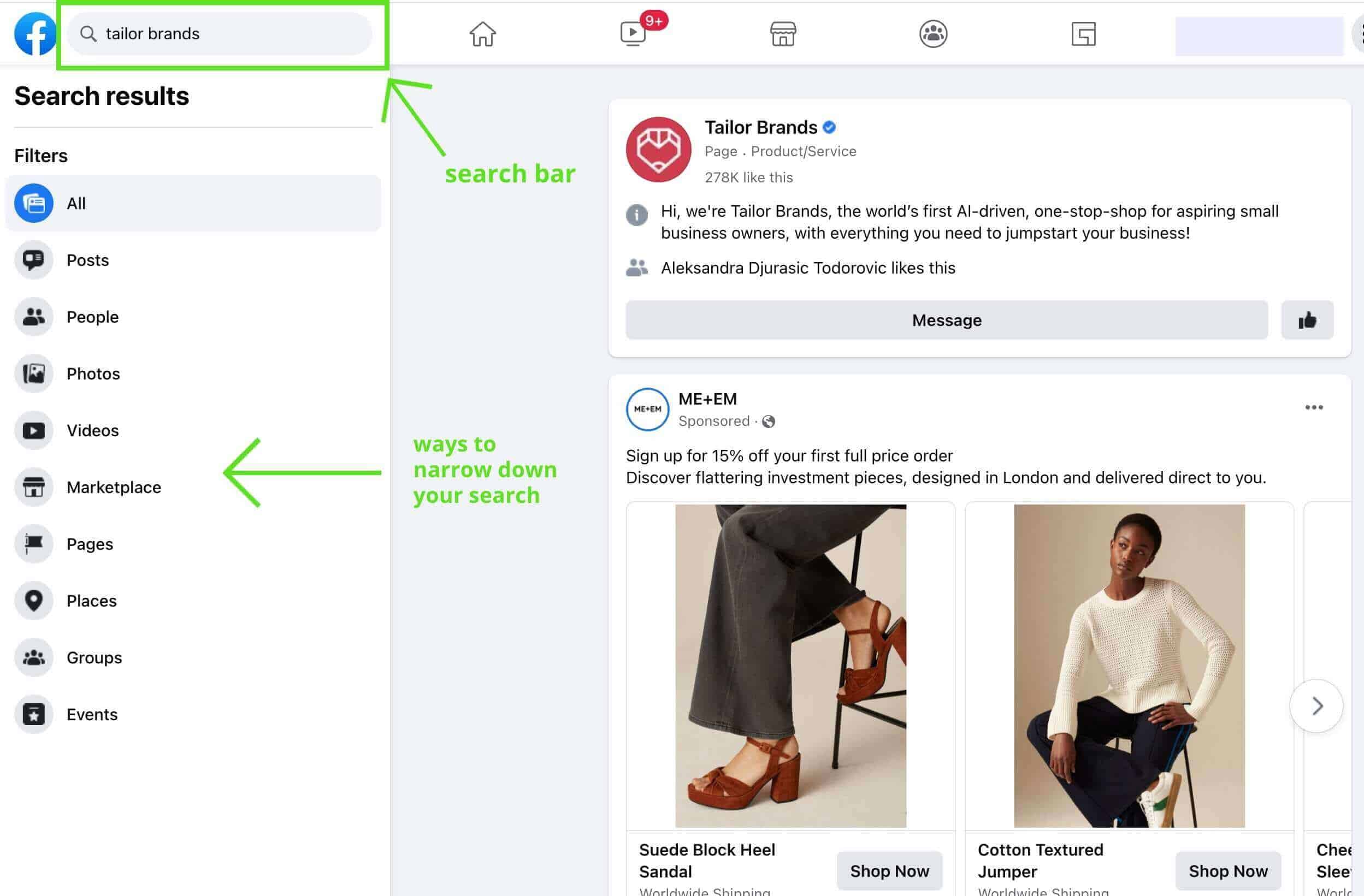
To find these groups, here’s what you can do.
In the image above, I highlighted two areas. The first is the search bar. It’s located in the top left-hand corner of your homepage. This is where you can look up your competitor or groups people are in.
The second is the search filters, it appears after you make a search in the search bar. Here you can narrow down your search options by selecting where the results will come from. You can choose the results to show only groups, photos, people, etc.
Quora is a social question-and-answer-based platform. It’s a great place to research what customers are saying about your product or to research your competitors.
You can also ask questions to users, and usually, you’ll get a decent amount of replies.
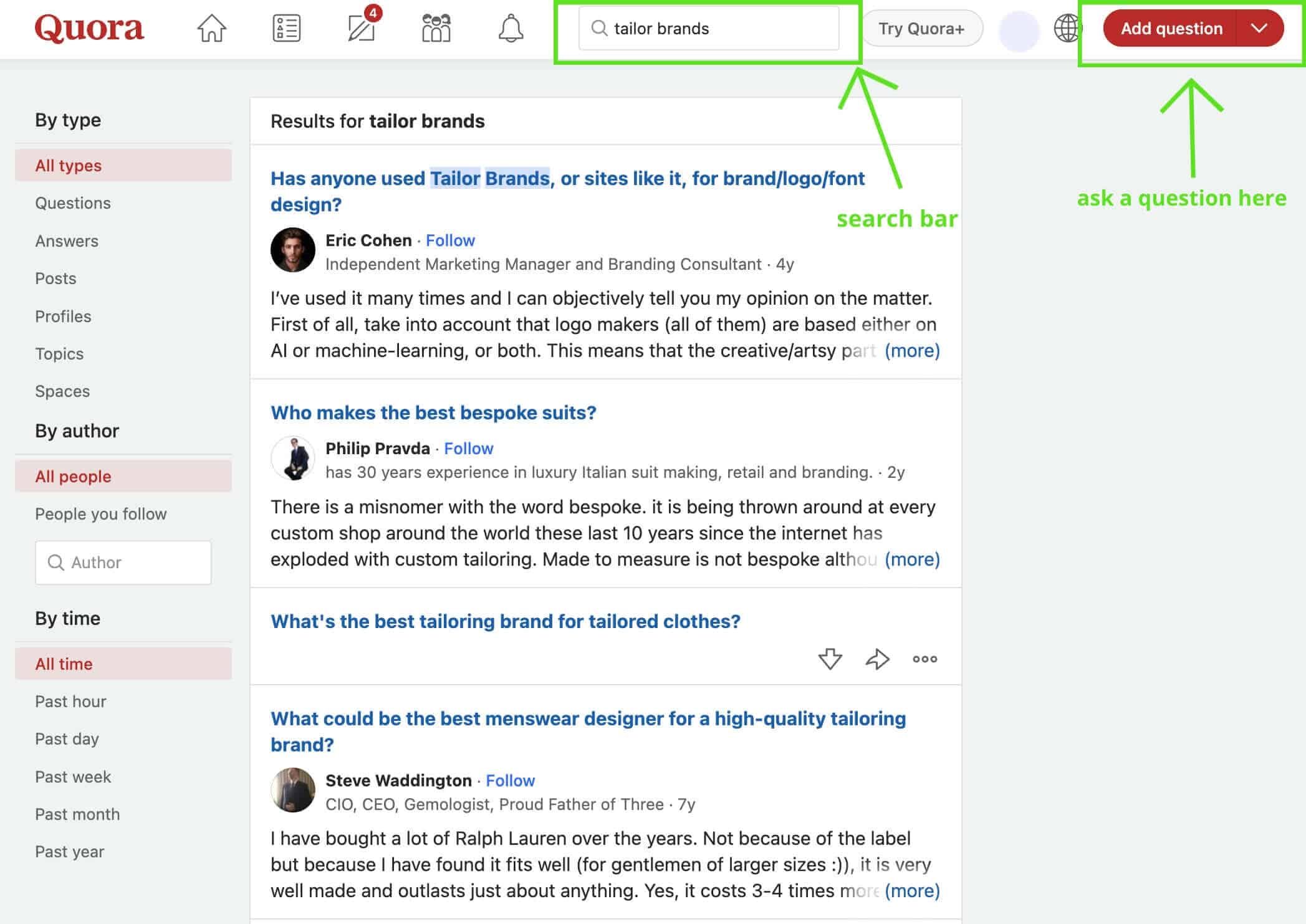
As you can see in the above image, you have a couple of options for searching on Quora.
You can search questions or brands in the search bar, located in the upper center of the screen.
Or, if you can’t find what you’re looking for, you can ask Quora users a question by selecting “add question,” on the upper right-hand corner of the screen.
You wouldn’t typically think about Reddit as a place to research your audience, yet it’s a great place to look.
Reddit is a group of forums where anyone can talk about anything—including business.
You simply type into the search bar (highlighted in green) what you want to read about and then see what pops up.
Now, maybe what you’re looking for isn’t on Reddit yet. You can ask a question, and people on Reddit will answer. So, if you want to ask a question on Reddit, you need to do the following:
1. Create an account. Click “sign-up” on the top right-hand corner.
2. Fill in the required information: email, username, and password.
3. Click “create an account.”
4. Once your account is created, you can ask questions and comment on Reddit.
5. Use the search bar located in the upper center of the screen to look up questions or competitors.
If you don’t see the answers you’re looking to create your own post in a subreddit (a topic-related subform on Reddit). To create your own post on Reddit, do the following:
1. Select the plus symbol on the top right-hand corner of the screen.
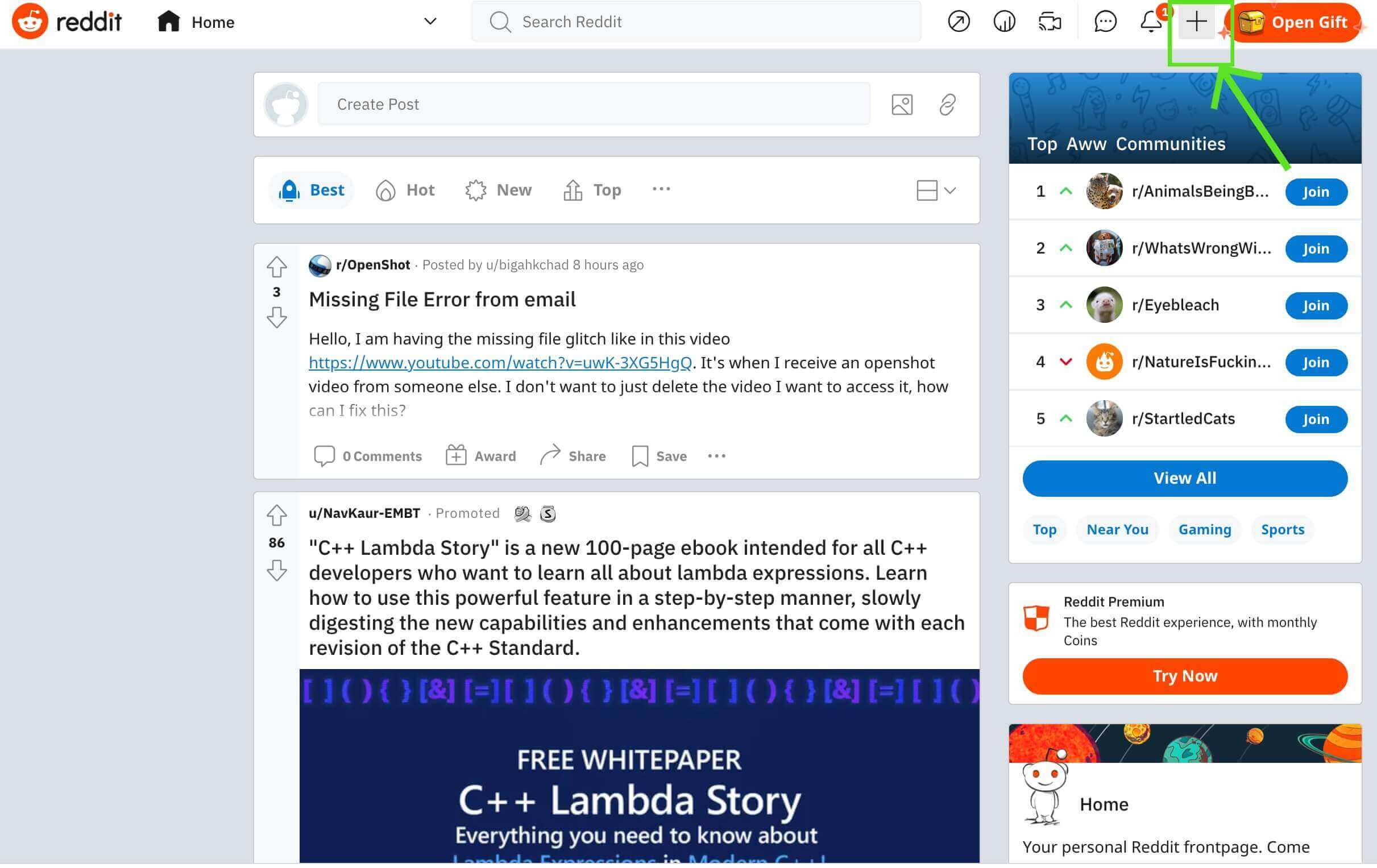
2. From there, you’ll be taken to a page where you can create your own post. On this page, you can select which sub-community you would like your post to be shown on.
3. Click on “choose a community.”
4. A drop-down menu will appear, showing you subreddits you may have joined. We recommend using r/askreddit. (R/ – means you’re looking in a community (subreddit), which is essentially a specific forum).
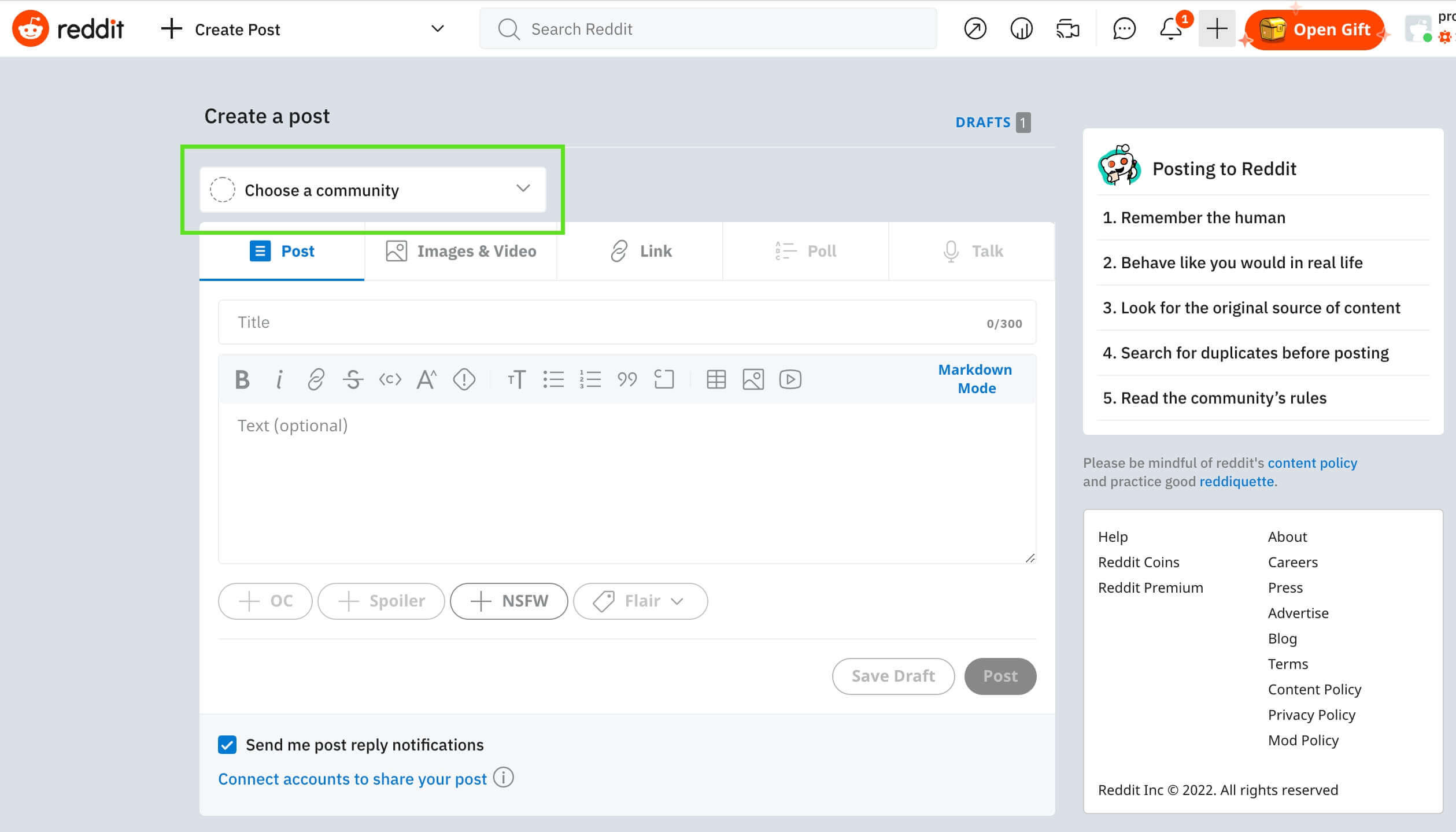
If you want to make a post for your industry, you can look up to see if a community (subreddit) exists. For example, you have a nail salon and want to ask a question about nail art. You can look up r/nails, and a list of forums will appear for you to choose from.

Reddit, in the beginning, can be a little tricky to get the hang of. So, I recommend playing around with Reddit, even doing a test post to help you understand and become comfortable with how it works.
Trustpilot is a free and open review platform that hosts reviews of businesses worldwide. You can gain a lot of insight into your competitor’s audience just by reading the reviews.
Depending on your product or service, you can see what your competitor’s audience likes, dislikes, and the challenges they faced while using the product/service.
You simply look up your competitor’s name in the search bar, and you’ll be taken to their review page.
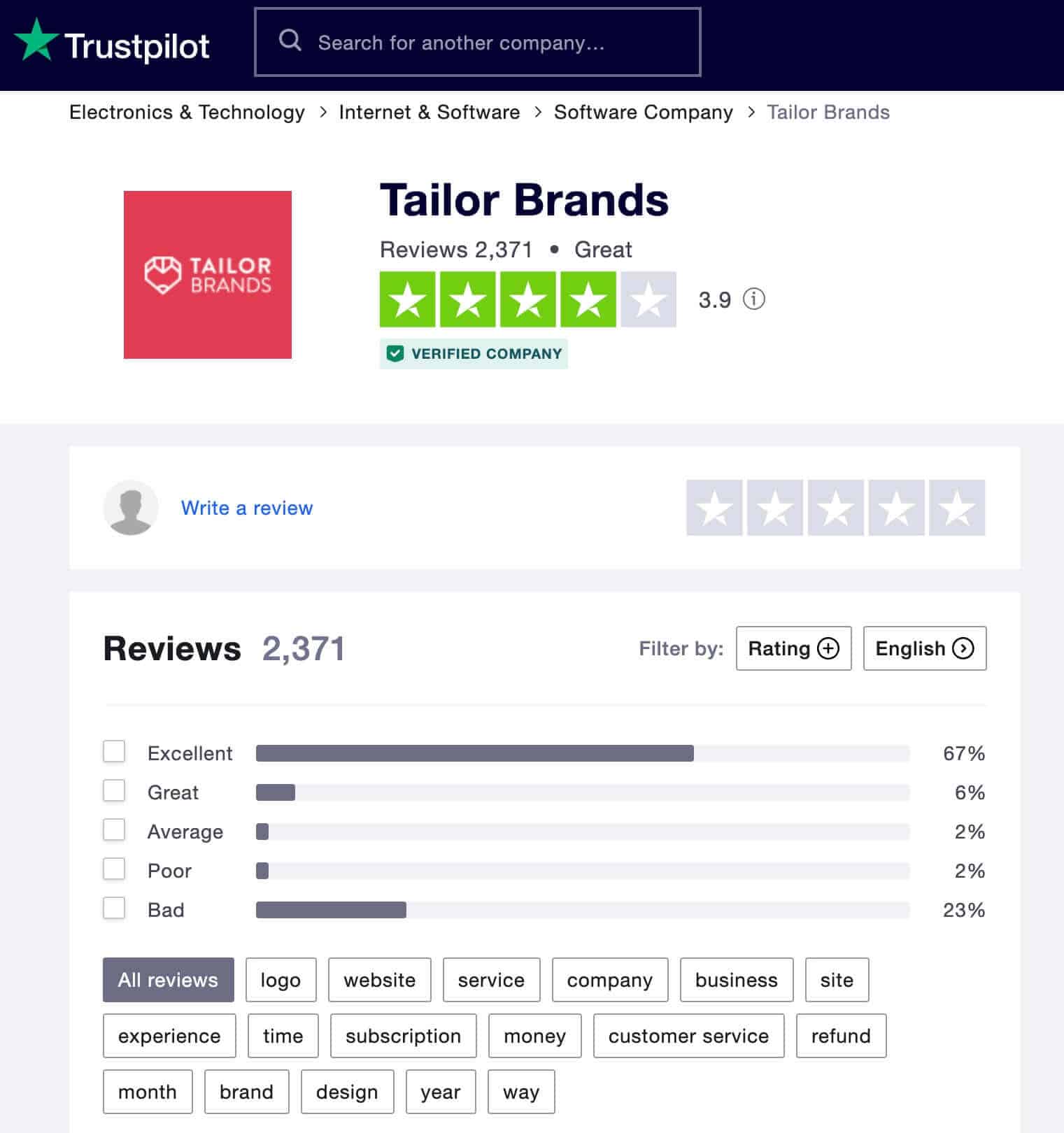
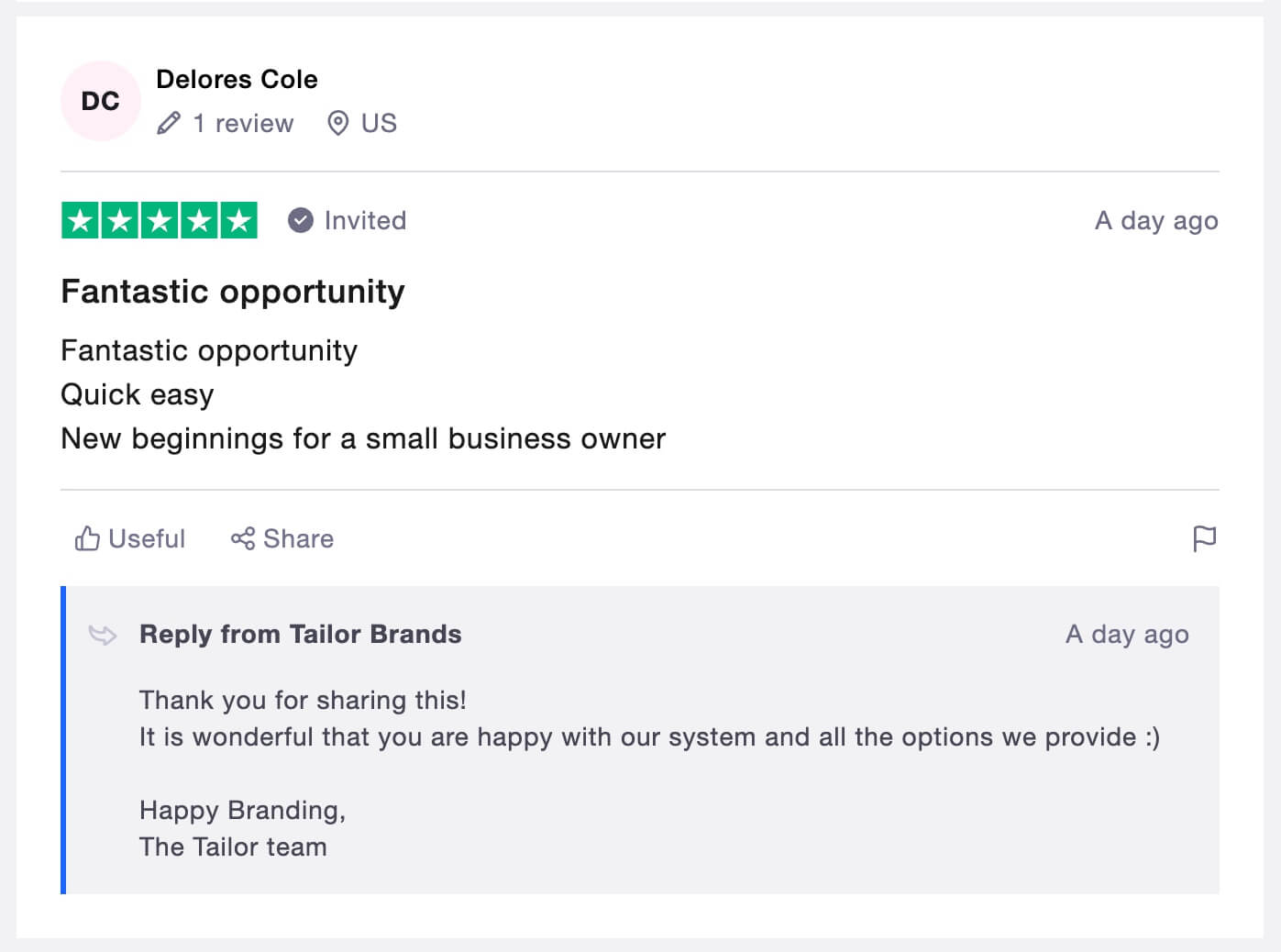
For example, above, we see one of our customers enjoyed how quick and easy it was for beginners to use our logo design service. So, that’s an element we need to include in our marketing strategy.
You’ve done the research and now you have a pretty good idea of who your audience is. Now it’s time to create an audience persona!
So let’s continue with the example of having a vegan cupcake business. Before you can market your vegan cupcakes, you need to know about your audience, their needs, goals, and pain points—hence, why you need an audience persona.
So how do you write an audience persona that represents your ideal audience?
1. Look at your research and write out your findings.
2. Then, it’s time to create a persona. To do so, include the following:
Now, you put all this information together and write a story about this persona. By the end, you’ll have a detailed audience persona.
Here’s an example:
Katie is a 28-year-old single woman working full-time as a yoga instructor in Vancouver and wants to live a more environmentally sustainable and healthy lifestyle.
While she loves to support the environment and live a healthy life, she struggles to find vegan options when she has a sweet tooth.
Even though Katie is not a real person, she sounds like one. And that’s because your audience persona represents reality.
Now you have a deeper insight into Katie and understand her pain point.
With your vegan cupcakes, you can create a marketing message that connects with her pain point on a personal level.

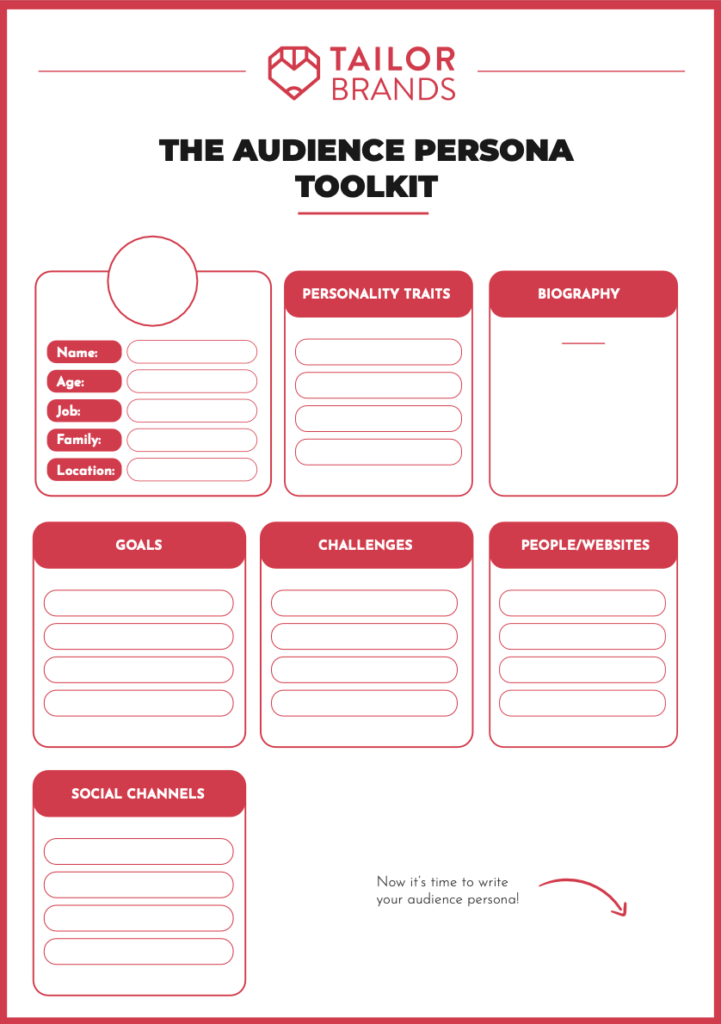
Download this PDF template and have it available whenever you need.
Once your audience persona is created, you need to update it. “An audience persona is a living and breathing document,” Gordon says. “As you get more information about your audience, you should update your audience persona.”
Updating your audience persona helps you stay on top of your customers, keeping that connection strong. If you lose touch with your audience, your business will pay the price.
Just remember, as your business grows, you may realize that you need to create multiple audience personas for each target audience.

You’ve invested your time in creating an audience persona (yay!), but how are you going to apply it to your business?
With your audience persona, you have a clear concept of your audience’s pain points, needs, and goals—and this information is priceless.
Now, you can create marketing campaigns that connect with each segment group of your audience.
For example, if you have a vegan cupcake business, your marketing message will vary depending on each specific audience’s pain points, needs, and goals.
Does someone living a vegan lifestyle have the same needs as someone with food allergies? No. So, your marketing campaigns will target different pain points.
A pain point for vegans is the struggle to find tasty vegan desserts, like cupcakes. While a pain point for someone with food allergies is finding food that doesn’t cause an allergic reaction.
Both of these pain points require different marketing messages.
With your audience persona, you can send the right message to your different audiences and shift your business to better serve them. In the beginning, you may only have one audience, but as you grow, you may have multiple audiences to market to.
Gordon also says an audience persona can help you understand where to direct your market strategy. ” When you know most of your audience gets their information from TikTok or Instagram, then you can focus your marketing on those platforms. Also, it’ll help you understand how they consume content—is it through video? Blogs?”
No one said starting a business was easy, but it’ll be a lot easier if you spend the time researching and creating an audience persona.
Once you know who your audience is, you can speak to them in a way that resonates with them. And that’s when you’ll see your business start to grow. So, take the time to develop an audience persona—you won’t regret it.
This portion of our website is for informational or educational purposes only. Tailor Brands is not a law firm, and the information on this website does not constitute legal advice. All statements, opinions, recommendations, and conclusions are solely the expression of the author and provided on an as-is basis. Accordingly, Tailor Brands is not responsible for the information and/or its accuracy or completeness. It also does not indicate any affiliation between Tailor Brands and any other brands, services or logos on this page.
Products
Resources
©2025 Copyright Tailor Brands